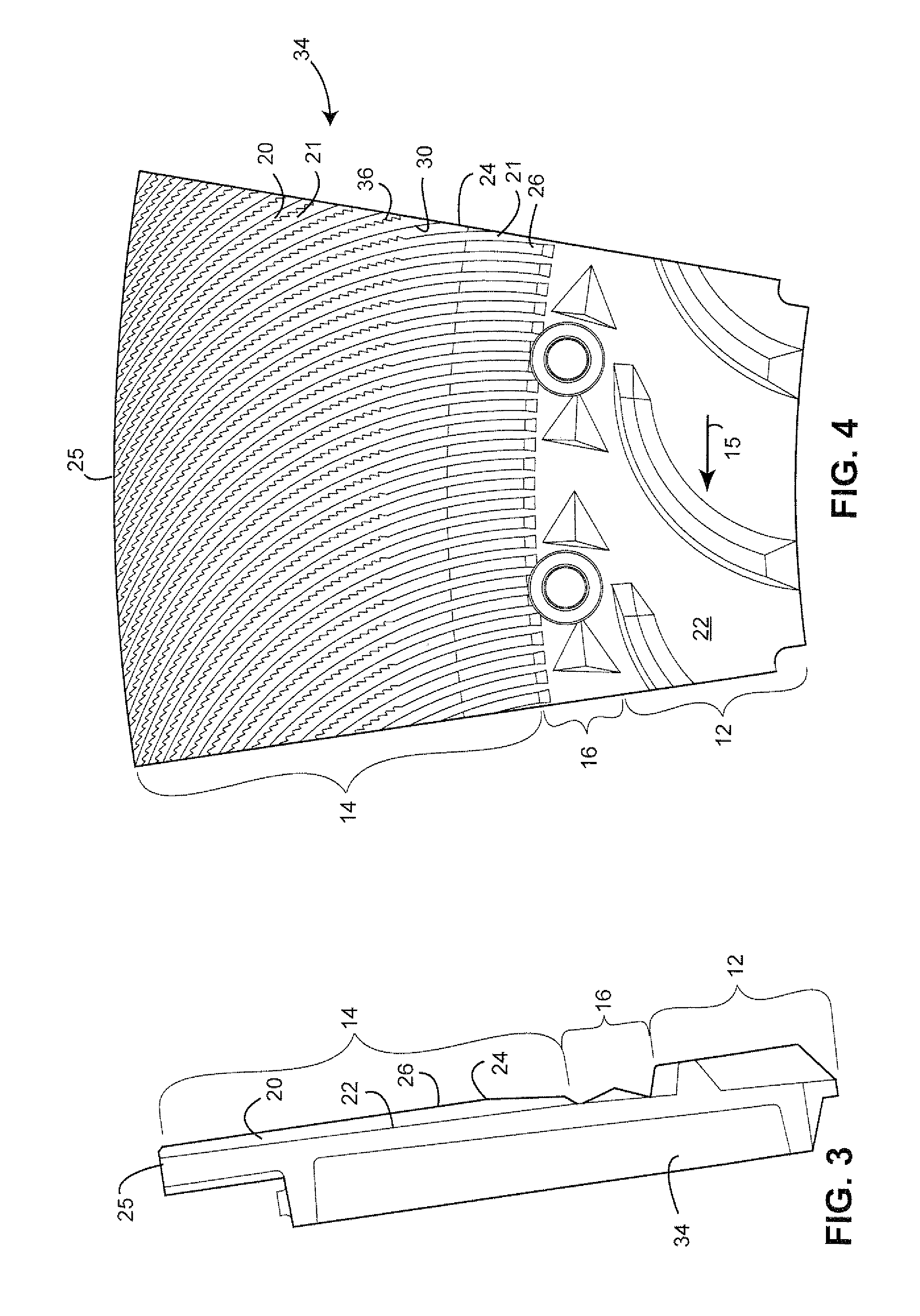Mechanical pulping refiner plate having curved refining bars with jagged leading sidewalls and method for designing plates
a technology of refining bars and refiner plates, which is applied in the field of disc refiners, can solve the problems of mechanical pulping process, reduce the energy efficiency of the refining process, and less desirable, and achieves the effects of reducing the cutting of fibers in the feed material, reducing the cutting of fibers, and long serving plate li
- Summary
- Abstract
- Description
- Claims
- Application Information
AI Technical Summary
Benefits of technology
Problems solved by technology
Method used
Image
Examples
Embodiment Construction
[0039]The mechanical refining process applies cyclical compressions to a fibrous pad of fibrous material moving between opposing refining plates. The compressions result from the rotation of one plate relative to the other and, particularly, to the crossing of bars in the opposing plates. The compressions cause fibers in the material to separate from a network fibers in the material. The plates are typically mounted on discs in a refiner, wherein at least one of the discs rotates one of the refiner plates. The energy efficiency of the refining process may be improved by increasing the compression ratio of the fibrous pad and increasing the period during which fibers in the pad are subjected to the compressions. The increased compression ratios are achieved with the refiner plate designs disclosed herein without necessarily reducing the gap between the plates or reducing the gap only to the extent now done in conventional high energy efficiency refiners.
[0040]A relatively wide gap, e...
PUM
| Property | Measurement | Unit |
|---|---|---|
| holdback angle | aaaaa | aaaaa |
| holdback angle | aaaaa | aaaaa |
| holdback angle | aaaaa | aaaaa |
Abstract
Description
Claims
Application Information
 Login to View More
Login to View More - R&D
- Intellectual Property
- Life Sciences
- Materials
- Tech Scout
- Unparalleled Data Quality
- Higher Quality Content
- 60% Fewer Hallucinations
Browse by: Latest US Patents, China's latest patents, Technical Efficacy Thesaurus, Application Domain, Technology Topic, Popular Technical Reports.
© 2025 PatSnap. All rights reserved.Legal|Privacy policy|Modern Slavery Act Transparency Statement|Sitemap|About US| Contact US: help@patsnap.com



